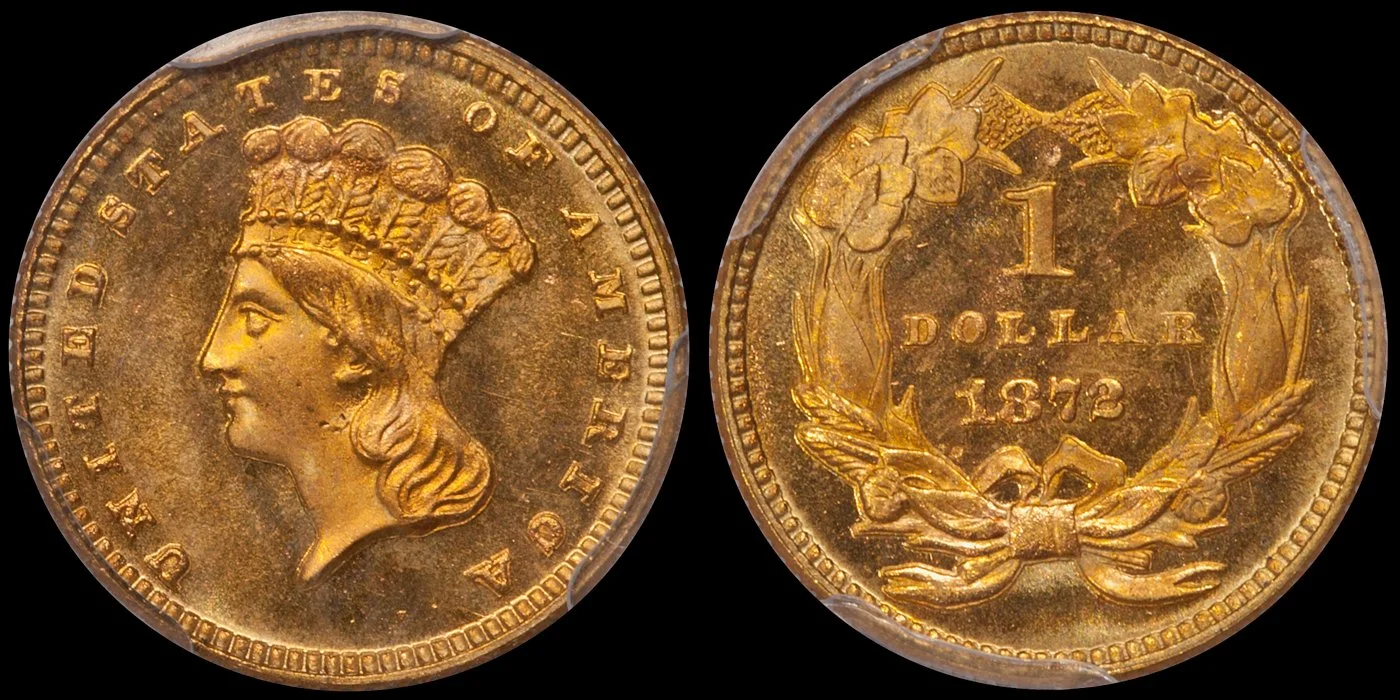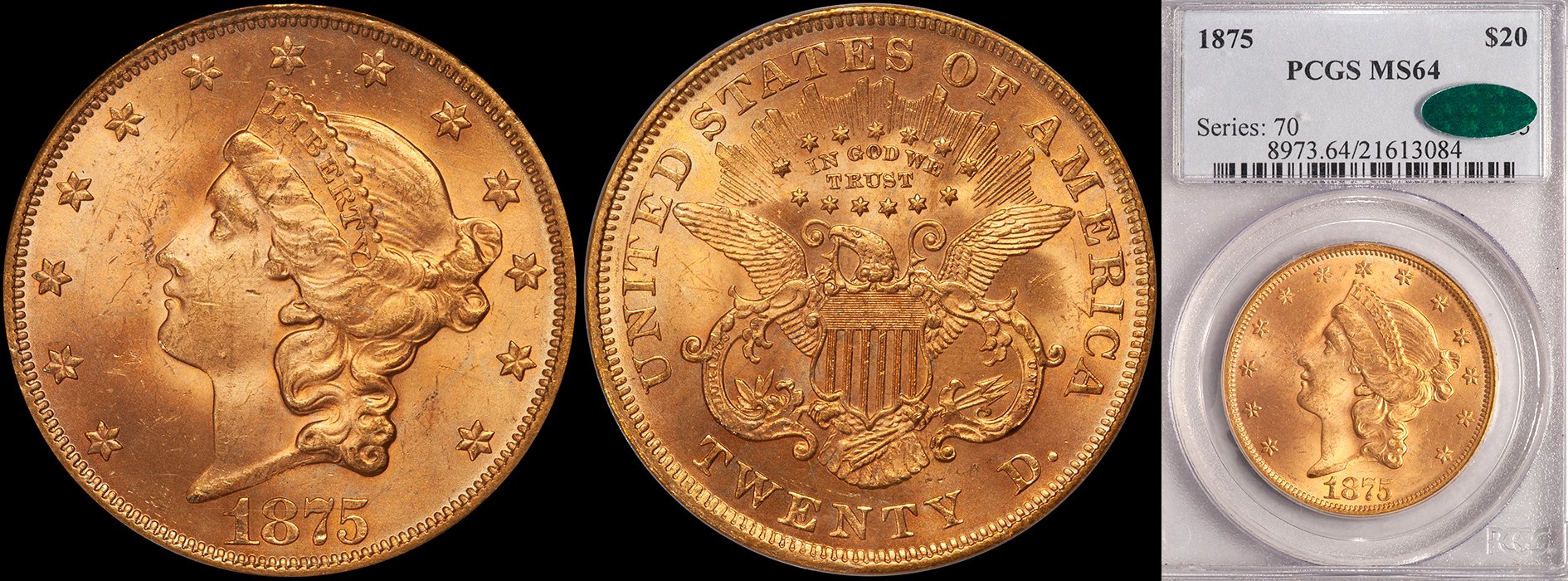Behind the Curtain: March, 2022
/Many of the ultra-rare coins we sell never make it onto the DWN website. Every now and then, we let you go Behind the Curtain to see some of the truly special coins we sell to clients. These are typically individuals who have active want lists with us, or who we are working with closely to create important sets.
Our first installment of this series garnered numerous comments, some pithy emails/texts, and a number of want lists from collectors searching for special coins. In this installment, we look at three more very special coins sold by DWN which didn’t make it onto our website.
1. 1862 $20, NGC MS63+★ CAC
Most advanced collectors of Type One Liberty Head double eagles are in agreement that the 1862 is the single rarest issue of this type struck at the Philadelphia mint. The 1859 is likely the most difficult issue of this type from Philadelphia in Uncirculated (I’ve never seen one better than MS62 and am aware of no more than five to seven which are Uncirculated), with the 1862 a close second. It is likely that fewer than a dozen Uncirculated 1862 Twenties exist with most in the MS60 to MS62 range.
1862 $20.00 NGC MS63+★ CAC
The single finest business strike 1862 $20 is an NGC MS64 which is owned by the New England Collection; it has been off the market since it brought $62,100 in a 2005 auction. The next best I am aware of is the Crawford/Hansen PCGS/CAC MS63, which is likely off the market for many years.
This example, while not pedigreed as such, was clearly one of the four Uncirculated 1862 double eagles found in the S.S. Republic shipwreck. It had an outstanding appearance with bright green-gold surfaces which lacked most of the deep abrasions which plague this issue. It was offered for sale as Lot 3309 in the Heritage 2/2022 auction.
Given that this was likely the only chance a serious collector would have to buy an 1862 $20 in high grades (and with enough eye appeal to garner a sticker at CAC), I knew this coin was going to smash the previous auction record of $78,000 set in May 2020 for a non-CAC PCGS MS63, which I thought was a bit enthusiastically graded when I saw it in person.
DWN purchased this coin for $174,000 which is evidence of the strength of higher-end Type One double eagles; a segment of the market which has shaken off its doldrums and become quite lively of late.
2. 1863 $20, PCGS MS63
Also included in the Heritage 2/2022 sale was a nice PCGS MS63 example of the third rarest Philadelphia date of this type, the 1863.
1863 $20.00 PCGS MS63
There were some marginally Uncirculated examples of this issue in the S.S. Republic treasure, but the 1863 remains extremely rare in MS63 (just two are graded as such by PCGS) with but a single coin finer: the MS64 from the Hansen Collection which was previously owned by Bill Crawford.
This coin had a totally different appearance than the 1862 discussed above. It was likely not a shipwreck coin as it possessed rich natural orange-gold color over frosty surfaces. I’m going to assume that this coin didn’t pass muster at CAC on account of some scuffs in the obverse fields but, in my opinion, it was very solid for the grade and it ranked high in the Condition Census.
I purchased this coin for $90,000 which I thought was a pretty reasonable number given that it brought $85,188 in its last auction appearance in January 2015.
I purchased this coin for the New England Collection, which is likely the second finest set of Type One double eagles, trailing only the Hansen Collection.
This coin joins an impressive group of Civil War P mint double eagles which is as follows:
1861, PCGS/CAC MS65
1862, NGC MS64 (finest known)
1863, PCGS MS63
1864, PCGS MS65 (finest known)
1865, NGC MS66 (finest known)
3. 1872 $1.00, PCGS/CAC MS67+
I’ve always been intrigued by the fact that many of the scarcer, low mintage Type Three gold dollars made from the early 1860s through the mid-1870s have small numbers of absolutely superb Gems. These are coins which grade MS67, MS68, and even MS69 by today’s standards. Why do these coins exist?
1872 $1.00 PCGS MS67+ CAC
It is probable that a quantity of 1872 gold dollars (likely on order of 10-20 coins) were saved by contemporary collectors/dealers/hoarders. They were aware of the low mintage of these coins, and given that gold dollars were a lot easier to salt away than eagles or double eagles, it made sense to take a small position.
We know that many of these gold dollars wound up in possession of Virgil Brand, the Chicago mega-collector who was active in numismatics from the late 1870s until he died in 1926. It is very likely that most—if not all—of the uber-Gem 1872 gold dollars were once part of the Brand holdings.
The 1872 has a mintage of 3,500; a figure very much in line with the numbers of gold dollars produced for circulation during each year of the 1870s. The current PCGS population is 7 in MS67 (this number seems inflated by resubmissions, and the actual number of different coins in more likely four or five), 4 in MS67+, and 1 in MS68.
This piece is absolutely lovely with rich natural orange-gold hues over reflective surfaces. I sold it to a prominent Midwestern collector who is putting together an impressive year set of high-end gold dollars.
I’m happy to take you Behind the Curtain and would like to remind you that many amazing coins are sold by DWN which fall WAY under the radar. To learn more, email me at dwn@ont.com.












